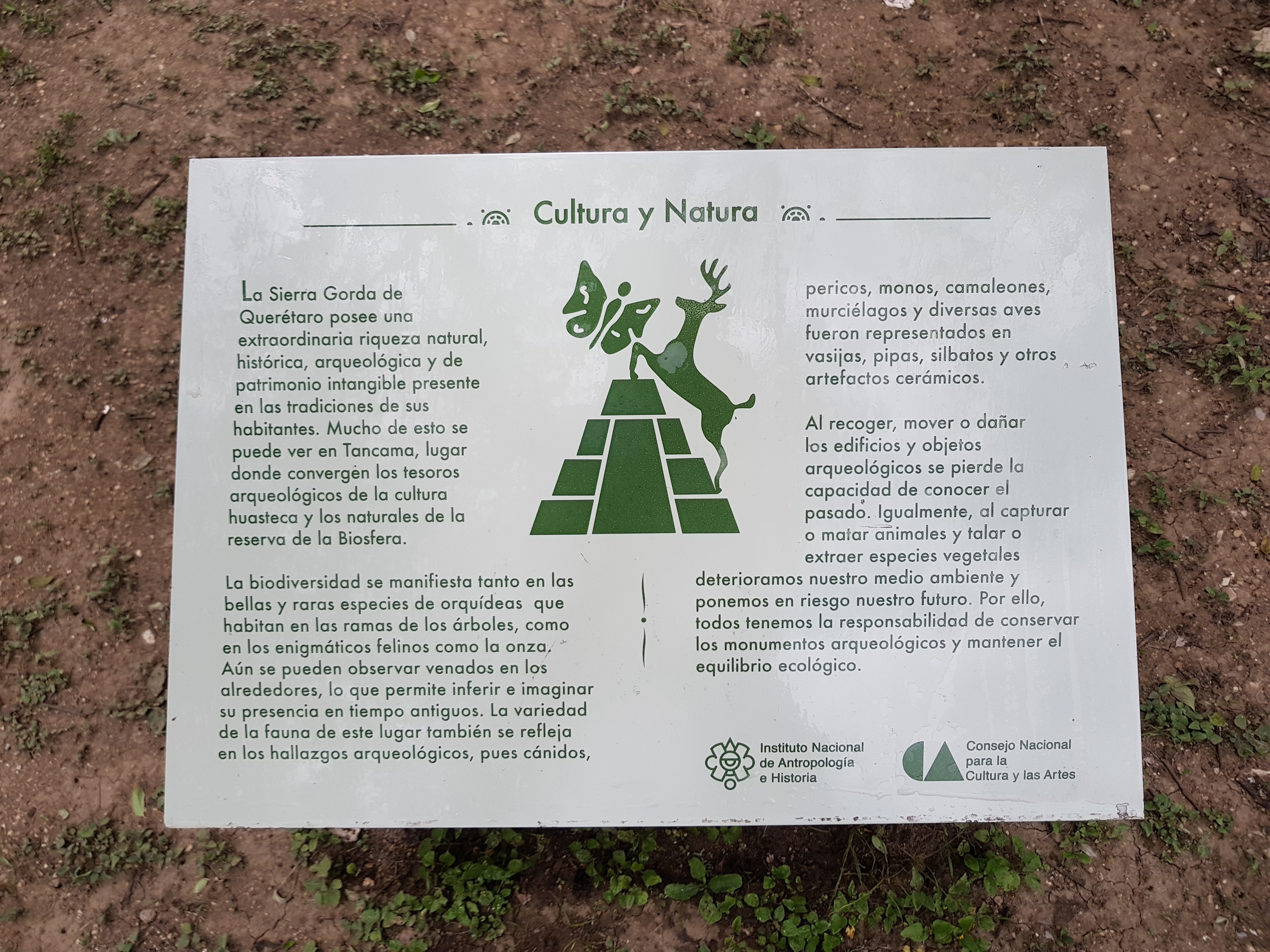Photograph as originally submitted to
this page in the Historical Marker Database
www.HMdb.org.
Click on photo to resize in browser. Scroll down to see metadata.
Photographer: J. Makali Bruton
Taken: July 14, 2018
Caption:
An additional nearby marker on Nature and Culture | Additional Description: This additional marker is just southeast of the Copper Butterfly Building. It reads:
Cultura y Natura
La Sierra Gorda de Querétaro posee una extraordinaria riqueza natural, histórica, arqueológica y de patrimonio intangible presente en las tradiciones de sus
habitantes. Mucho de esto se puede ver en Tancama, lugar donde convergen los tesoros arqueológicos de la cultura huasteca y los naturales de la reserva de la Biosfera.
La biodiversidad se manifiesta tanto en las bellas y raras especies de orquídeas que habitan en las ramas de los árboles, como en los enigmáticos felinos como la onza. Aún se pueden observar venados en los alrededores, lo que permite inferir e imaginar su presencia en tiempo antiguos. La variedad de la fauna de este lugar también se refleja en los hallazgos arqueológicos, pues cánidos, pericos, monos, camaleones, murciélagos y diversas aves fueron representados en vasijas, pipas, silbatos y otros artefactos cerámicos.
Al recoger, mover o dañar los edificios y objetos arqueológicos se pierde la capacidad de conocer el pasado. Igualmente, al capturar o matar animales y talar o extraer especies vegetales deterioramos nuestro medio ambiente y ponemos en riesgo nuestro futuro. Por ello, todos tenemos la responsabilidad de conservar los monumentos arqueológicos y mantener el equilibrio ecológico.
English translation:
Culture and Nature
The Sierra Gorda de Querétaro has an extraordinary natural, historical, archaeological and intangible heritage present in the traditions of its people. Much of this can be seen in Tancama, where the archaeological treasures of the Huastecan culture and the natives of the Biosphere Reserve converge.
Biodiversity is manifested in both the beautiful and rare species of orchids that inhabit the branches of the trees, as in the enigmatic felines like the native lynx. You can still see deer in the area, which allows us to infer and imagine their presence in ancient times. The variety of fauna of this place is also reflected in the archaeological findings, since canines, parakeets, monkeys, chameleons, bats and various birds were represented in vessels, pipes, whistles and other ceramic artifacts.
By collecting, moving or damaging buildings and archaeological objects you lose the ability to know the past. Likewise, by capturing or killing animals and cutting down or extracting plant species, we deteriorate our environment and put our future at risk. Therefore, we all have the responsibility to preserve the archaeological monuments and maintain the ecological balance.
Submitted: July 20, 2018, by J. Makali Bruton of Accra, Ghana.
Database Locator Identification Number: p436308
File Size: 4.087 Megabytes
To see the metadata that may be embedded in this photo, sign in and then return to this page.
